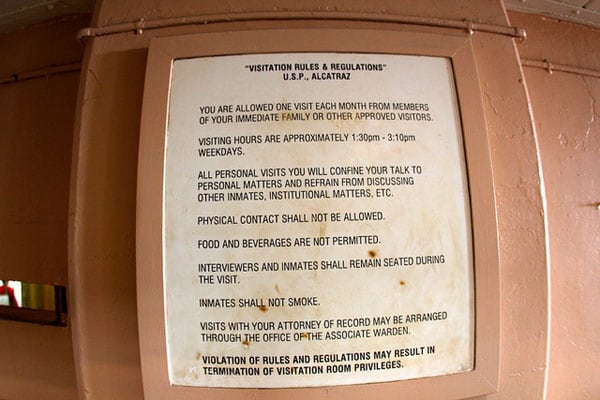
June 10, 2018; Idaho Statesman and Tampa Bay Times
People inside Florida’s prison system are fighting back against cuts that will further isolate them from the outside world. Mary Ellen Klas of the Tampa Bay Times reports that the most recent budget for the Florida Department of Corrections (FDC) had a $50 million deficit, but the prison system had a plan which included curtailing such stuff as successful treatment and transition programs for prisoners, and, finally, visiting hours, which the department said it could not safely staff. Among other things, say officials, visitors bring contraband.
Instead, FDC contracted with a for-profit company called JPay to provide video visitation for inmates and their families. JPay installed kiosks and tablets in the prisons and maintains them at no cost to FDC. They also run a program whereby families can transfer money to inmates. The tablet families need to connect with their loved one costs $80, plus $2.95 per minute of visitation. Email costs $0.44 per typewritten page.
Let’s remember that a disproportionate number of those families are already low-income and under enormous economic and emotional stress. Now, a group representing families of prisoners has vowed to boycott these systems, demanding that funding to allow for in-person visits to be restored:
The families are pushing back. In addition to boycotting the video visitation program used at the kiosks, the families of the 97,000 inmates will also boycott the JPay program used to transfer money to inmate accounts set up by the Florida Department of Corrections. Rather than letting JPay profit off cash transfers and purchases, families will now send money to the accounts using wire and bank transfers and circumvent the programs.
Brian Alexander of the Atlantic reported,
The Prison Policy Initiative uncovered a contract between Securus and Maricopa County, Arizona, that provided for a 10 percent commission to the county of gross monthly revenues, but only if the number of paid video visits reached at least 8,000 for that month. If Securus grossed $2.6 million or more, the county’s percentage rose to 20 percent.
Thus, the poorest are taxed yet again to maintain contact with their loved ones, even though family interest is in the public’s best interest. Studies have shown that visits to inmates from their loved ones reduces recidivism. Face-to-face contact builds trust, but even some jails, where a significant percentage of inmates are not yet convicted or are serving short sentences for misdemeanors, are switching to video systems even for people who are in the same building.
Sign up for our free newsletters
Subscribe to NPQ's newsletters to have our top stories delivered directly to your inbox.
By signing up, you agree to our privacy policy and terms of use, and to receive messages from NPQ and our partners.
As Daniel Hatcher, a law professor at the University of Baltimore, says, “Video visitation is a link in the whole system that sees inmates as a revenue opportunity.”
Patrick Manderfield, FDC spokesperson, defends the practice, saying, “It’s important to note, they (JPay) are implementing this technology in our institutions at no cost to Florida taxpayers, and they also provide monitoring for these services which is necessary in a correctional environment.” Of course, this ignores the taxpaying families with loved ones in prison, who are paying dearly for low-quality video calls.
This is part of a larger problem in which the US sees incarcerated people as less than human, as underserving of basic rights, and, now, as a profit opportunity, despite the fact their families are not likely to have much money, given the American predilection for locking up people of fewer lesser means.
The Prison Policy Initiative reports,
Video visitation is ironically the least prevalent in state prisons, where it would be the most useful given the remote locations of such facilities, and the most common in county jails where the potential benefits are fewer. In contrast, jails typically implement video visitation in an unnecessarily punitive way.
Tracie Natoli-Aaron, whose daughter is also incarcerated at Lowell, said she can’t afford the $80 tablet.
Kathy Jo Carlin added, “JPay will make a killing and we will all be poorer. They think the tablets will replace programs they don’t have and are no longer because of funding, so what about families that can’t afford them? Where are their programs and incentives?”
The Campaign for Prison Reform, a 501c4 nonprofit, and half a dozen other advocacy groups are demanding a special session so the Legislature can close the funding gap and reinstate the visitation hours. Andrew Gillum, the mayor of Tallahassee, added his voice to the call. But given the creeping prevalence of video visitation in prisons across the country, they have quite the fight ahead.—Erin Rubin












